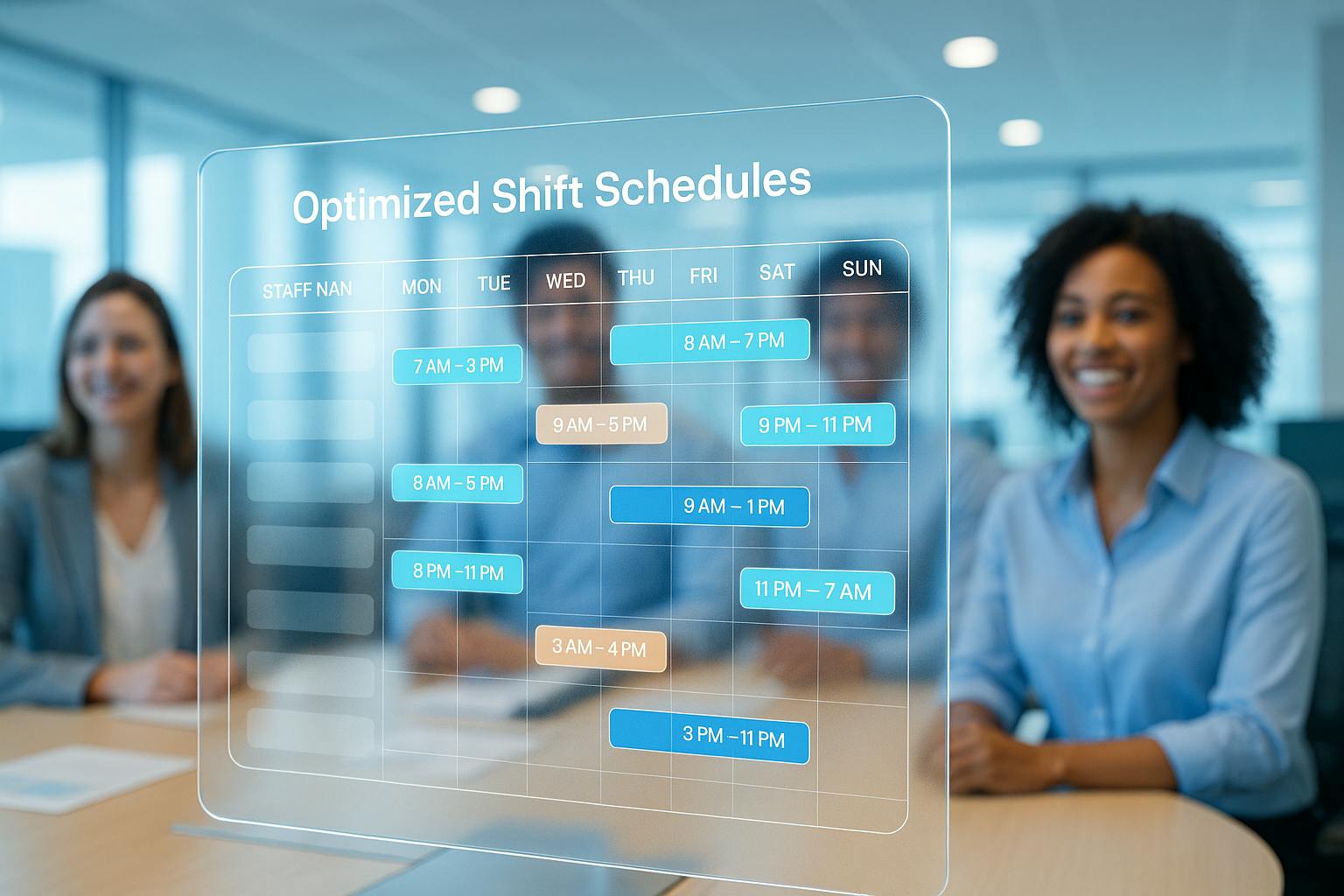The Accelerated Adoption of Optimizers and Self-Scheduling in Workforce Scheduling
Read time: 5 minutesWorkforce scheduling is evolving rapidly. AI-powered optimizers and self-scheduling tools are helping planners and employees make smarter, data-driven decisions. As a result, organizations are increasing productivity, enhancing employee satisfaction, and freeing up valuable planner time. The future of workforce planning is already here.
An insight by Goos Kant, Industry Leader Workforce at ORTEC & Professor Logistic Optimization at Tilburg University & JADS

Workforce management is rapidly becoming a priority in boardrooms worldwide. Persistent staff shortages and growing concerns about employee wellbeing are putting pressure on existing teams while raising expectations for organizations. At the same time, employees are demanding more engagement and flexibility; especially in sectors such as healthcare, where demand continues to rise due to an aging global population. These dynamics are reshaping organizations across industries.
Fortunately, the potential for improvement is significant. Advanced mathematics, AI, and self-scheduling are emerging as essential tools in workforce scheduling, boosting both productivity and employee satisfaction. However, this requires the right approach and attention: AI is not a magic bullet, solving all problems. But with the right approach and managing the changes, it can support planners and employees making better decisions. Among our clients, we see strong growth in the adoption of optimization tools and self-scheduling. For example, more than 100 organizations now leverage self-scheduling, with employee participation increasing by over 30% in just six months.
Manual Scheduling
Workforce scheduling has become a critical process in response to the growing challenges of workforce management. Until recently, schedules were created manually by a team leader or central planner. Given the complexity of building an effective schedule, planners were often satisfied simply if all shifts were covered. This approach relied heavily on the planner’s experience and knowledge of employee preferences and restrictions.
However, manual planning often led to unnecessary hiring, unfulfilled contracts, or overlooked preferences. Some planners were also skeptical about workforce optimization tools, viewing them either as a threat to their role or as producing results they found unfamiliar.
The Power of Mathematics and AI in Workforce Planning
Mathematics and AI offer substantial benefits in workforce planning. Given the right input on requirements and preferences, these technologies can generate schedules that outperform manual planning in every aspect. “Better” can mean meeting labor and skill requirements, honoring personal requests, supporting ergonomic considerations, or reducing the need for additional hiring. These improvements can be tracked with KPIs, measured before and after the introduction of optimization tools. Across numerous implementations, AI-powered optimizers consistently improve all KPIs, enhancing both efficiency and schedule quality. Achieving this requires a solid understanding of the problem and the mathematical techniques needed to model it effectively.
AI-generated schedules differ from manual ones and require review. Occasionally, adjustments are necessary to reflect overlooked preferences. Optimizers are designed to support planners in making complex decisions - similar to how a calculator aids in mathematics - while final decisions always rest with the planner. In practice, using an optimizer can reduce planning effort by over 50%, allowing planners to focus on tactical and customer-facing tasks. Adoption is accelerating, with organizations increasingly using optimizers to create shift schedules or assign daily tasks and workstations.
The Success of Self-Scheduling in Workforce Scheduling
In recent years, self-scheduling has gained momentum, typically following a three-step process. First, each employee creates their own draft schedule. Next, everyone gains visibility into the full schedule, including unfilled or overstaffed shifts, and can adjust their availability to resolve conflicts. Finally, a central planner addresses any remaining issues to ensure every shift is covered without over- or understaffing.
This approach maximizes employee engagement and works best when only minimal changes are required after the second and third rounds. Employees value having greater influence over their schedules, feeling more involved, and experiencing planning as a collaborative process. Surveys show higher satisfaction, stronger engagement, and a greater willingness to swap shifts with colleagues.
The adoption of self-scheduling has soared: usage has increased by more than 30% in just six months, with over a hundred organizations now using it—including large international companies and many healthcare providers. Last year alone, ten hospitals each had more than 1,000 employees fully engaged in self-scheduling.
Opportunities for Smarter Workforce Planning
Self-scheduling is most effective when employee preferences align closely with organizational needs, making it essential to continually improve this balance. In the third round, it can be challenging for planners to resolve outstanding conflicts without reworking the entire schedule—an area where optimizers provide valuable support. Typically, initial schedules are built around required skills and shift coverage, with specific assignments made closer to the actual workday. These final decisions can be handled manually, or preferably, with optimization tools that respect skill requirements, labor regulations, and personal preferences.
AI in workforce scheduling can also predict which shifts are likely to be most popular in upcoming scheduling rounds, helping employees make more informed choices when building their schedules. Last year, we published a paper with practical tips and strategies to help organizations maximize the impact of these tools.
Self-scheduling may also need to be adapted to each department’s needs. Some departments might prefer two or four rounds instead of the standard three—either starting directly with group visibility (round two) or adding a priority round where certain staff can choose shifts before opening them to all employees. Reviewing daily shift requirements against actual needs is equally important, and leveraging historical data and forecasting ensures the right number of employees are scheduled at the right time and place. Finally, optimizers continue to evolve, improving not only through advances in mathematics but also by learning from the differences between planned and actual schedules.
Conclusion
Mathematics and AI are accelerating the adoption of optimizers and self-scheduling in workforce planning. Customer success stories across industries clearly demonstrate the measurable benefits of AI-driven workforce scheduling. Within the coming years, we expect most employees to be scheduled in this way.
Beyond improving employee satisfaction, engagement, and productivity, AI in workforce management will also free up valuable planner time, reduce lead times, and ultimately enhance both service and quality.

